If your due date is getting closer by the day, it's time to start choosing between infant car seat vs convertible car seat.
You have to ask yourself:
Do I need a portable and lightweight car seat or a seat my baby can use for more than two years?
We are here to answer your possible questions if you are still unsure what you should be looking for in a car seat!
By comparing infant and convertible car seats, you will know what will work better for your lifestyle, safety, and budget!
More...
What is an Infant Car Seat?
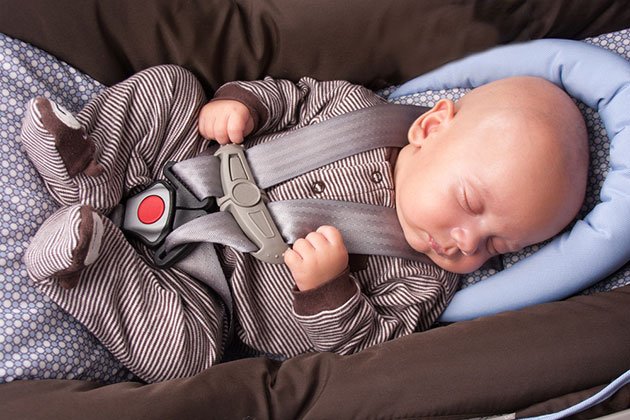
Infant car seats are designed for infant passengers only and are considered the safest transport for the baby's early days. All of the infant car seats are installed rear-faced. A rear-facing position offers the best safety for young passengers while supporting the head, spine, and neck.
Usually, parents opt for an infant seat for the baby's first year. An infant car seat is composed of two parts:
An infant carrier and a car seat base.
Most infant car seats include a newborn insert for smaller babies. The insert keeps the baby snug, while the five-point harness installation is much easier and safer, especially for preemies.
Many infant car seats come with a weight limit of 30-35 pounds, depending on the car seat manufacturer. However, experts recommend you switch to a rear-faced convertible before the child's head is less than one inch from the seat's top.
- Compact dimensions for smaller vehicles
- Includes a car seat base with the carrier for safer installation
- Often a part of the travel system
- It has a carry handle for portability
- It can be installed with a LATCH system or a seat belt
- Offers the best child safety for infants
- The baby exceeds the height and weight limits.
- Not every infant car seat is suitable for bigger babies.
What to Look for in an Infant Car Seat?
What is a Convertible Car Seat?
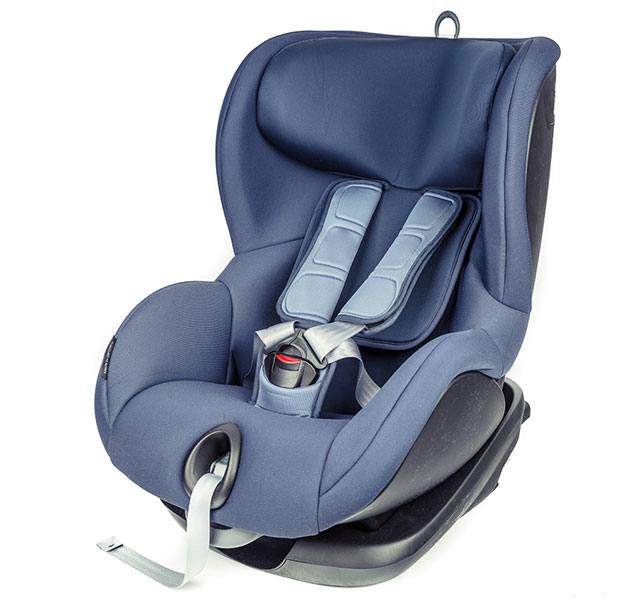
A convertible car seat converts between different installation modes. For example, the convertible car seat can be used as a rear-facing or forward-facing position, while some models even work as high back and backless boosters.
Convertible car seats are a worthy investment for long-term use. If you opt for all-in-one seats, you can use them from birth to preschool!
Unlike infant car seats, convertible seats usually have a large weight and height limit for rear-faced rides. Most convertible car seats have a large weight limit in a forward-facing mode of 65 pounds, while the rear-facing position is suitable for up to 50 pounds.
- An excellent investment for long-term use
- Some models can be used as a booster
- A convertible seat may allow for longer rear-facing rides
- As the child grows, a convertible seat allows for adjustment features
- A convertible car seat is often bulky and heavy
- It’s often challenging to install two car seats in the back
- Not suitable for portability and traveling
What to Look for in a Convertible Car Seat?
How Long Can You Use an Infant Car Seat?
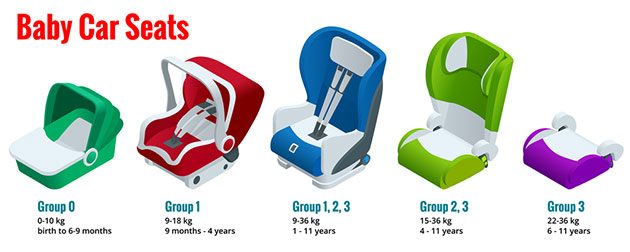
The infant car seat will depend on its height and weight limit. Infant seats usually have a weight limit of 30-35 pounds, while the infant insert should be removed once your baby reaches 15 pounds.
A child reaches the maximum height limit of their infant's rear-facing seat before exceeding the weight limit. For this reason, the baby's head mustn't reach more than one inch over the seat's top.
It's best to switch from an infant car seat to a convertible one once the baby reaches the weight and height limits, as AAP recommends.
However, all of the information varies on the car seat manufacturers. Look for the instruction details in your infant car seat manual.
Infant vs Convertible Car Seat: How Are They Different?
Besides their use and installation modes, infant and convertible car seats differ in several aspects.
However, we note that infant and convertible car seats are not your only options. They are both adequate for child safety, with numerous crash-tested models.
An infant car seat is not better than a convertible or vice versa. The car seats follow the child's growth differently, with unique installation modes and weight and height limits.
Most parents prefer having both options for their child's development. Here is how they compare.
Safety Features
An infant rear-facing car seat and a convertible seat are the safest car seat options for young passengers. Both car seats include a five-point harness.
Since convertible car seats are manufactured for prolonged use, they may include a few more safety features than infant seats. However, this does not make convertible car seats safer than infant ones.
Convertible car seats may include side impact protection, adjustable headrest, and extended ride rear-facing.
Most models include a newborn insert for smaller babies. The insert snugs around the baby's body while offering a proper fit in the car seat. Most infant car seats prioritize safety but lack some of the features that convertible seats provide.
Installation Process
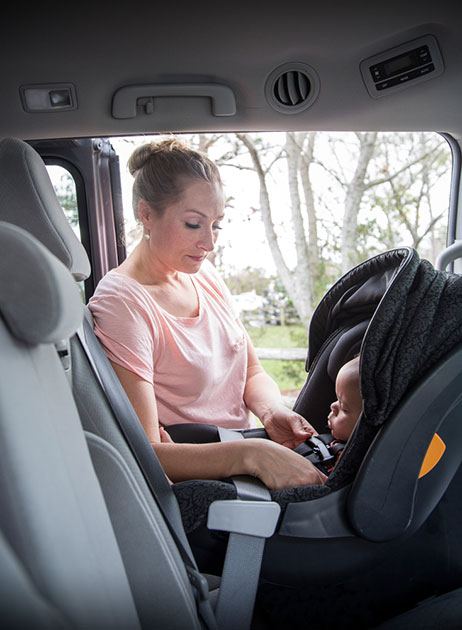
Two installation methods commonly used with both convertible car seats and infant seats are
latch system (lower anchors) or vehicle seat belt.
But, here's the kick:
You can use only one installation method at a time; never combine both!
Infant car seats come with a detachable car seat base, while a few models have an integrated car seat base. The base makes the process of installation so much easier and more secure. However, if you are using an infant car seat in a taxi or an Uber, you will need to carry the base with you or install it with a seat belt.
Some convertible car seats include the ISOFIX car seat base. The Isofix base has a built-in level indicator, so you don't have to stress about installation. The indicator would alarm you if you didn't install the car seats properly.
Seating Positions
A convertible car seat can be installed as a rear-faced or forward-facing car seat. Most car seats with convertible style are all-in-one seats. An all-in-one seat can be converted into a high-back and backless booster seat in forward-facing positions.
In comparison, the infant car seat can only be installed as a child rear-facing device. Therefore, children under two must ride only in a rear-facing position until they reach the weight and height measurements for forward-facing.
However, convertible car seats do have the upper hand in long-term use. While an infant seat can be used for a maximum of two years, a convertible seat can last you for at least five years, depending on the child's age.
Stroller Compatibility
Infant car seats are compatible with a variety of strollers. You can create your travel system on a budget by choosing an infant car seat. Convertible car seats are not stroller compatible.
If you wish to save time and your budget by picking a car seat stroller, then infant car seats are the way to go!
Accessories
Both infant car seats and convertible ones offer a variety of accessories. For infant car seats, your baby can enjoy accessories such as: a baby mirror, body insert, car seat cover, rain cover, insect net.
Convertible car seats are no stranger to accessories, either. Many convertible car seats include:
- A cup holder for your toddler's drink or snack.
- Additional storage compartments.
- Sunshades.
With both of the car seats, you can get an additional car seat travel bag if you plan on checking the seat on the plane.
FAQs
Do you need an infant car seat?
An infant car seat is not a requirement if you already own an infant-appropriate car seat. Convertible car seats can also be a good choice for newborns if used correctly and following the recommended weight and height limits.
Are infant car seats safer than convertibles?
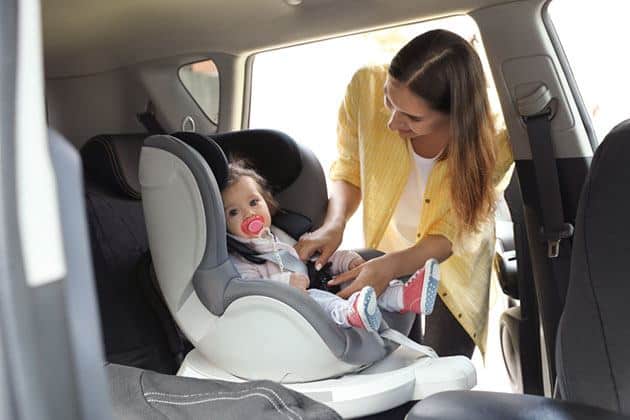
No, infant car seats are not safer than convertible seats. A car seat is considered safe if the child meets the weight and height requirements.
One car seat is not safer than the other as they can be installed rear-faced. The only aspects that vary are the riding positions.
What is the safest car seat for a newborn?
The safest car seat for a newborn is the Chicco KeyFit 30. The award-winning rear-facing car seat reached incredible results in safety tests, as well as high safety rankings.
The Chicco KeyFit 30 is a lightweight seat with comfortable padding. In addition, the car seat includes a carry handle that allows parents to transport the sleeping baby from one car to another easily.
Can I use a convertible car seat for a newborn?
Yes, a convertible car seat can be used for newborns if they meet the weight and height limits. When using a convertible car seat for newborns, you need to include the infant insert. The insert offers a snug fit until the baby reaches at least 15 pounds.
When do you remove the newborn insert from a car seat?
A newborn insert is removed once the baby reaches a weight between 11-15 pounds, at around six months. However, as most car seat manufacturers have different designs, it's best to consult with your manual.
By looking, you can see when your baby is getting big enough for insert-free rides.
Final Words
Regardless of your ultimate choice, there is no safer option than convertible and infant car seats. Both seats have safety features that prioritize your baby's well-being and comfort.
As a parent, it's crucial to know all the differences, advantages, and disadvantages these seats offer. Only by knowing that you can choose the seat that provides the best supporting system for your child's transport.
